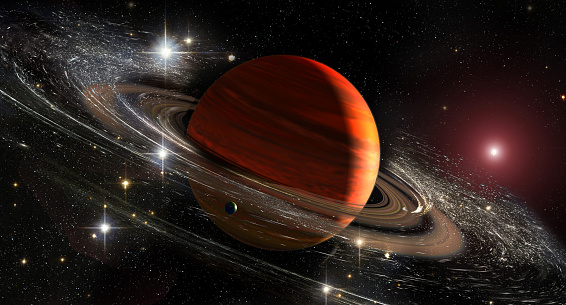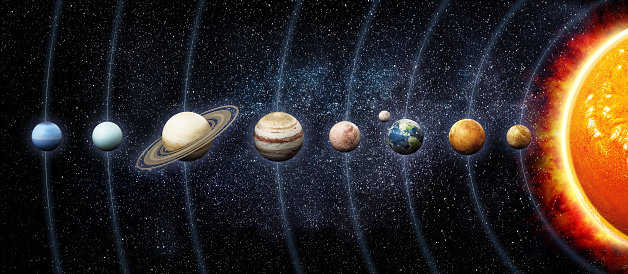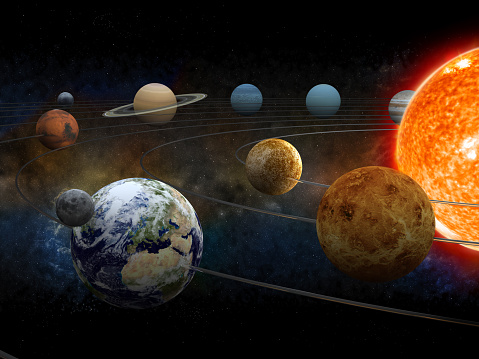Wildest planets in the Milky Way: Universe facts
Our understanding of the deep space mysteries is continually expanding. There are wildest planets out there. The Perseverance rover landed on Mars in February 2021, and the first image of a black hole was revealed on April 2019. We are now able to examine light coming from the very beginnings of our universe thanks to the James Webb Space Telescope. It has given insight into many wildest planets in the universe. The first definitive proof of carbon dioxide in an exoplanet’s atmosphere was recorded by Webb in August 2022. The planet is a gas giant that orbits a Sun-like star 700 light-years away (but we do not yet have an image of it).
Even if these amazing mechanical achievements have increased our capacity to understand the universe, there is still a vast amount of space, including a great number of exoplanets in distant systems, that needs to be explored. Exoplanets, which are planets that are found outside of our solar system, can be incredibly bizarre. One might be the Earth’s twin, another resembles a rugby ball, and a third circles a supernova. Since 1992, we have found more than 5,000 exoplanets as a result of our constantly expanding view of the cosmos. In fact, the Kepler Telescope found that there are more exoplanets in our galaxy than stars. By measuring their diameters and masses, scientists can determine whether they are rocky, gaseous, ice, or streaming with lava, yet some still defy explanation.
TOI-1452b’s: wildest planets

IMAGE CREDITS: istockphoto.com
A “promising candidate for future atmospheric characterization” was recently discovered by the James Webb Space Telescope in this exoplanet orbiting a red dwarf star 100 light-years away. Researchers found this exoplanet because, like many others, it obstructs a portion of the star’s light whenever it passes in front of it.
Researchers can infer from this data that this planet is 70 percent larger than ours, giving it the moniker “super-Earth,” and that it revolves very quickly, once every 11 days or so. Its density would suggest that it has a deep ocean surface in addition to having a similar composition of rock and metal to our planet.
WASP-39
The exoplanet WASP-39 b was thoroughly studied by Webb’s Near-Infrared Spectrograph (NIRSpec), which also discovered convincing evidence of carbon dioxide in the atmosphere. This gas, which is common on Earth, has never before been found on a planet outside of our solar system. It is possible to detect water and methane, which are signs of potential life, in the 3- to 5.5-micron range, which is in the infrared region of the transmission spectrum.
WASP-39 b, a hot gas giant 700 light-years away and with a surface temperature of almost 1,600 degrees Fahrenheit, has a mass roughly one-quarter that of Jupiter but a diameter that is 1.3 times larger. It makes one lap around its Sun-like star every four Earth days due to its brisk orbit and near approach.
WASP-103 b: wildest planets

IMAGE CREDITS: istockphoto.com
The first non-spherical exoplanet discovered is WASP-103 b, which resembles a rugby ball. Tidal forces on the planet have pushed it into a rugby ball form, according to studies, as it whips around its star in less than a day.
The unusual planet within the constellation of Hercules was found by the Characterizing ExOPlanet Satellite, or Cheops, of the European Space Agency. WASP-103 b, which is twice the size of Jupiter, is quite close to its star, WASP-103, whose gravitational pull on it is constant. The planet’s apparent distance from its star seems to be increasing with each orbit, which is perhaps even more perplexing. Perhaps it’s too close to handle.
TYC 8998-760-1 b

IMAGE CREDITS: istockphoto.com
An incredibly young Sun-like star, only 17 million years old, is orbited by a gas giant. And its companion planet more than 300 light-years from Earth. Its planets must likewise be young. As we can detect from our ground-based telescopes. That they emit a light when they are still developing.
As a result, TYC 8998-760-1 b is a somewhat uncommon occurrence. Since, brightness typically at least partially conceals the planets themselves. This exoplanet was discovered by Chile’s Paranal Observatory in the Atacama Desert.
There is a possibility that TYC 8998-760-1 b is a brown dwarf. Which is a type of planet that is halfway between a failed star. And a typical planet in size and temperature. With a mass that is 14 times that of Jupiter, it is still a giant.
Barnard’s Star: wildest planets
The planets that Barnard’s Star lacks are more well-known than the ones it does have. I’ll explain. Since the 1960s, there has been a contentious debate in the astronomical community. About whether or not the star—the fourth closest to Earth—had planets. Right now, the answer is no. Nonetheless, for at least ten years after Peter van de Kamp made an official declaration in 1963. A lot of people held the mistaken belief that Barnard’s Star had two gas giants in orbit around it.
Van de Kamp persisted in his assertions, but Hubble observations in the late 1990s disproved them. But here’s the thing. Hubble didn’t rule out the possibility of planets around Barnard’s Star.
PSR B1257+12 A: wildest planets

IMAGE CREDITS: istockphoto.com
Throughout the past 20 years, planets around sun-like stars have been found. But, we have been aware of planets outside of our solar system for a while. They were simply fundamentally different from any solar system we had imagined. say, in the vicinity of a supernova remnant.
The record for the smallest exoplanet still belongs to the first one found. PSR B1257+12 A, also known as PSR B1257+12 b, is a pulsar-orbiting object that is hardly larger than the moon. In 1994, the planets in the system were found thanks to the drag they produced on their star of origin. The “most precise clocks in the cosmos” are pulsars, which are referred to as cosmic timekeepers. But, something was slightly off-centering PSR B1257+rhythm. 12’s.




